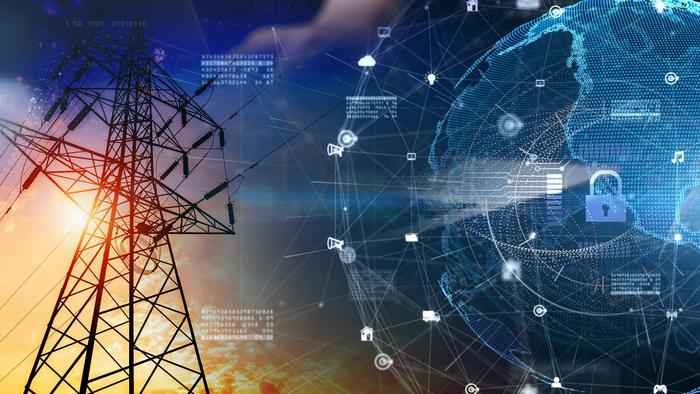Auburn University’s McCrary Institute for Cyber and Critical Infrastructure Security was awarded a $10 million Department of Energy grant in partnership with Oak Ridge National Laboratory to create a pilot regional cybersecurity research and operations center to protect the electric power grid against cyberattacks.

Credit: Credit: Auburn University
Auburn University’s McCrary Institute for Cyber and Critical Infrastructure Security was awarded a $10 million Department of Energy grant in partnership with Oak Ridge National Laboratory to create a pilot regional cybersecurity research and operations center to protect the electric power grid against cyberattacks.
The total value of the project is $12.5 million, with the additional $2.5 million coming from Auburn University and other strategic partners.
The center, officially named the Southeast Region Cybersecurity Collaboration Center, or SERC3, will bring together experts from the private sector, academia and government to share information and generate innovative real-world solutions to protect the nation’s power grid and other key sectors. It will include a mock utility command center to train participants in real-time cyber defense.
“Auburn University is proud to be at the forefront of this important field as we work against one of the greatest threats the country and the business sector will face in the future,” said Steve Taylor, Auburn University’s senior vice president for research and economic development. “The center will conduct critical research and provide real operational solutions to protect all of us as we address these challenges. We are thankful to Oak Ridge National Laboratory for partnering with us and Rep. Mike Rogers for his support in securing funding for this critical program.”
The center will run experiments with industry partners in a research lab environment to support integration of new and existing security software and hardware into operational environments. Research labs will be established at Auburn University, housed at the Samuel Ginn College of Engineering, and at the Oak Ridge National Laboratory in Oak Ridge, Tennessee.
“We are excited to work with Auburn on this important national mission,” said Oak Ridge National Laboratory Director Stephen Streiffer. “We’re combining our capabilities to partner with industry, develop new security technologies and transfer those technologies to industry, all while developing the workforce that will operate these enhanced systems.”
Workforce and skills development will be a core role of Auburn’s in this partnership.
“This project provides an exciting opportunity for our college and our students,” said Mario Eden, dean of the Samuel Ginn College of Engineering. “Our students will get hands-on experience in a real-world environment. We have a proven track record of innovation and this project perfectly aligns with our mission to provide the best student-centered engineering experience in America and expand our engineering knowledge through research.”
With an emphasis on critical infrastructure, the research will help utilities across the nation become more resilient to the increasing threat of cyberattacks.
“We know that adversaries want the ability to disrupt our energy infrastructure, which could be devastating for our communities,” said Moe Khaleel, associate laboratory director for National Security Sciences at ORNL. “SERC3 will focus on establishing regional partnerships and developing science-based solutions to mitigate these threats – and keep everyone’s lights on.”
Puesh M. Kumar, director of the Department of Energy’s Office of Cybersecurity, Energy Security and Emergency Response (CESER), praised the collaboration between organizations.
“I applaud Auburn University and Oak Ridge National Laboratory’s collaborative effort to advance grid cybersecurity,” Kumar said. “Everyone must come together – industry, the national laboratories, academia, as well as State and Federal governments – if we are to succeed against the growing cyber threats facing the U.S. energy sector from malicious actors and nation-states like the People’s Republic of China. This partnership is a critical example of that.”
Frank Cilluffo, director of the McCrary Institute, said the project is at the core of what the institute does.
“A secure and resilient grid is a national and regional imperative,” Cilluffo said. “Spearheaded by James Goosby at McCrary and Tricia Schulz at Oak Ridge, we will create new research to rapidly identify, share and mitigate cybersecurity risks while we train the future workforce we need to keep us safe.”
Auburn University is a nationally ranked land grant institution recognized for its commitment to world-class scholarship, interdisciplinary research with an elite, top-tier Carnegie R1 classification, life-changing outreach with Carnegie’s Community Engagement designation and an undergraduate education experience second to none. Auburn is home to more than 30,000 students, and its faculty and research partners collaborate to develop and deliver meaningful scholarship, science and technology-based advancements that meet pressing regional, national and global needs. Auburn’s commitment to active student engagement, professional success and public/private partnership drives a growing reputation for outreach and extension that delivers broad economic, health and societal impact.
UT-Battelle manages ORNL for the Department of Energy’s Office of Science, the single largest supporter of basic research in the physical sciences in the United States. The Office of Science is working to address some of the most pressing challenges of our time. For more information, please visit energy.gov/science.
This story originally appeared on the Auburn University website.



